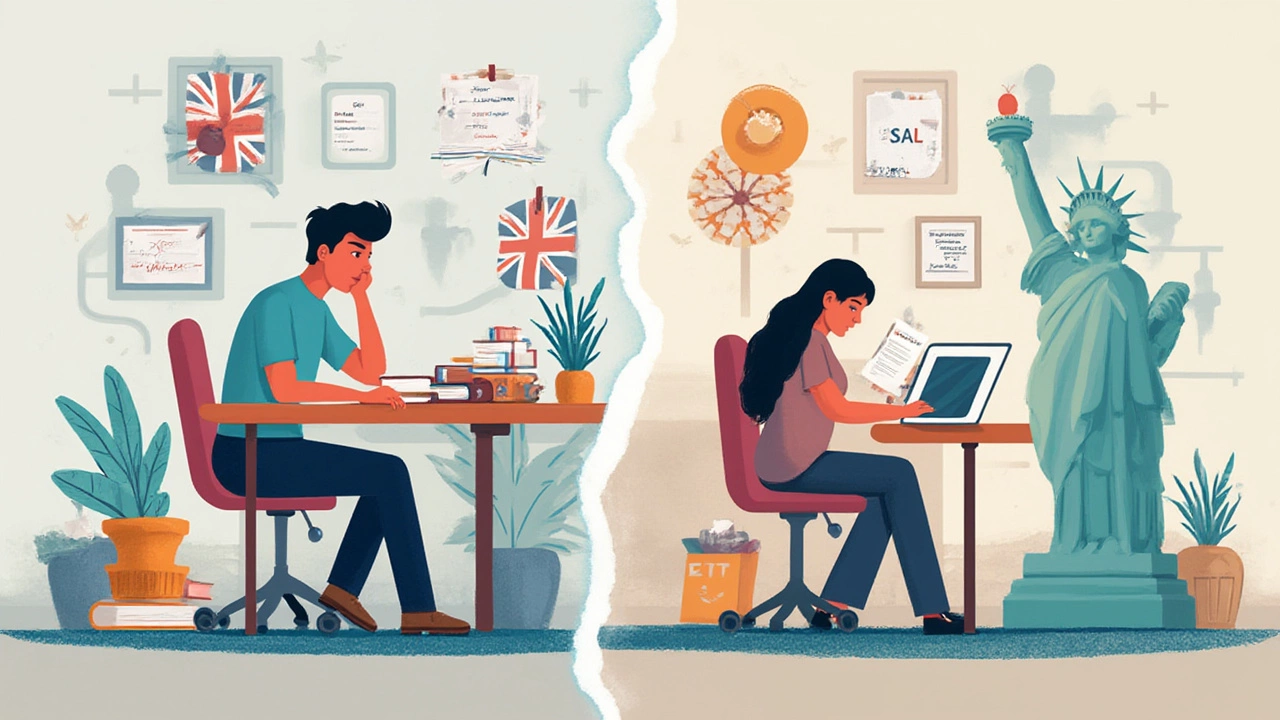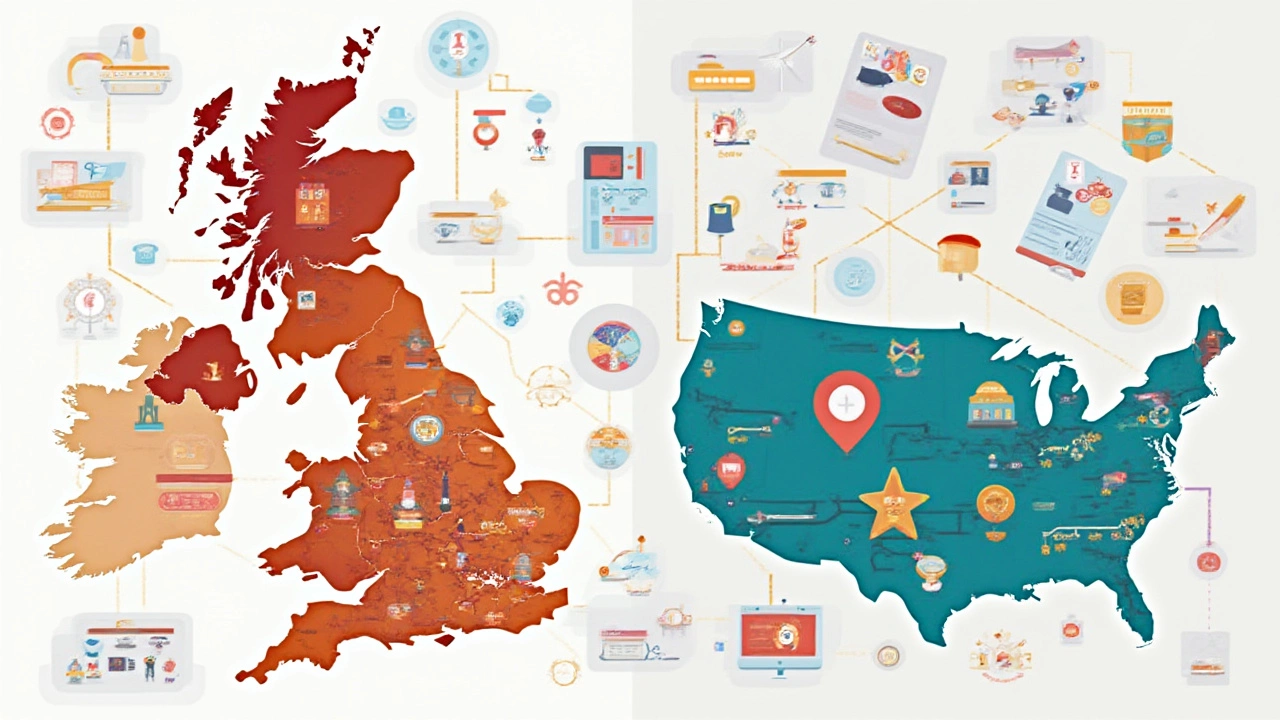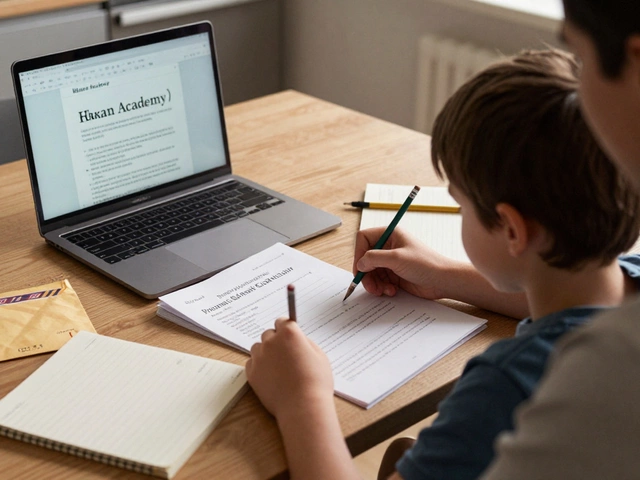If you ask a room full of students from the UK and the US which exam they’d rather avoid, you’ll spark a debate loaded with facts, panic stories, and plenty of eye-rolling. The clash between A levels and SATs isn’t just about test formats—it’s about two very different philosophies of learning, shaped by history, culture, and the kind of academic swagger each country loves to show off. If you’ve never looked too closely at either, listen up. You’ll end up with a clearer idea of which is actually tougher—and why that matters.
A Levels and SATs: What Are We Even Comparing?
So, let’s put the cards on the table. A Levels, short for Advanced Level qualifications, are the gold standard for 16- to 18-year-olds in the UK, usually taken after two years of focused study. Think of them as the gatekeepers for competitive university courses. You dive deep into three or four subjects, pile up a mountain of notes, and then sweat through exams at the end, often with coursework along the way. A Levels don’t mess about: you’re expected to become a near-expert in your chosen subjects. Whether it’s maths, chemistry, or history, you wrestle with lots of theory, challenging problems, and you’re often pushed into extended writing and problem-solving. The content can get seriously advanced because that’s the whole point—you specialize early. This is a major difference from the US system, where students take a broader range for longer.
Now, the SAT is less of a deep dive and more of a skills checkpoint. Short for Scholastic Assessment Test, it’s a standardized exam that US students usually take in high school, mainly in their junior or senior years (that’s around ages 16-18 too). But here’s the difference: the SAT is designed to gauge your readiness for college across reading, writing, and math. Everyone takes the same test, on the same day, no matter what subjects they fancy. There’s some essay writing (now optional as of recent years), and questions are all multiple-choice or grid-in. The topics? Mostly high school-level math, reading comprehension, and some basic grammar and essay writing. There are no essays requiring the full history of the Russian Revolution or solving calculus-level problems. It’s more about skills across the board and seeing how you stack up, not diving to the bottom of any one pool.
An interesting fact: If you look at the official College Board data, about 2.2 million students sat for the SAT in 2023. For A Levels, around 750,000 entries were reported for the same year, but because students take multiple subjects, the true student count is closer to 300,000. The volume and style are worlds apart—and this already hints at the real challenge ahead. The A Levels demand an obsessive focus and a long memory. The SAT, meanwhile, puts you in a room and hits you with questions you should be able to answer after an ordinary high school education.

Which Is Harder: How the Challenges Stack Up
The temptation is to say, totally different animals, so you can’t compare. But let’s get honest—students do compare, and universities do make judgments. Where do the big difficulties really lie?
For A Levels, the scale of content is ruthless. Take Biology for example. You’re dealing with the entire AQA syllabus, including cell structure, biochemistry, genetics, ecology, evolution, and practical experiments. The mark schemes expect you to write essays where you build an argument, supply facts, cite studies, and critique ideas. You’ve got to master the details—down to the difference between competitive and non-competitive enzyme inhibitors. You can’t just guess through multiple-choice questions and hope for the best. A top grade means two years of continuous revision, deep understanding, real analysis work, and a willingness to spend weekends reading textbooks. There’s real pressure: your A Level grades directly decide your university place, and there are no ‘do-overs’ the next month.
SATs, on the other hand, present a different kind of beast. The questions are less about depth, more about speed, accuracy, and handling pressure. Sure, the math won’t go beyond precalculus, and the reading won’t stretch to 19th-century literature, but you’re up against the clock. Here’s something few realize: the average student gets less than 1 minute per question on the reading section. The questions are packed with tricks—double negatives, weird phrasing, and answers designed to trip you up. If you lose focus, you fall for a trap. There’s also the factor of standardization—the same test, at the same time, in hundreds of countries. One careless error, and the computer scores you out of a perfect 1600. Want another go? That’ll be another Saturday with your nerves in knots.
Here’s a sample comparison in table form, with some interesting stats:
| Exam | Number of Subjects Tested | Format | Total Exam Length (Average) | Highest Score | Impact on University Entry |
|---|---|---|---|---|---|
| A Levels | 3-4 (specialized) | Mostly written essays/problems | 6-9 hours total per subject | A* | Decisive—direct offers |
| SAT | 3 Sections (broad) | Multiple choice, short answer | 3 hours (plus optional essay) | 1600 | Important, but alongside GPA & others |
The mindset required is different, too. If you’re an A Level candidate, you live in a world where mastery is the only option. You memorize, you practice structure in essays, you make revision cards, and you need nerves of steel on exam day. Miss a grade, miss that offer from Imperial or UCL. For SAT learners, test-taking strategy is king. You practice with past papers, master timing, learn how to guess, and polish up grammar rules you might never use again. A few days’ hard work can improve your score, especially on the reading and grammar sections, far more than it can for A Levels.
Maybe the most honest answer? A Levels are harder in the sense of intellectual effort and endurance, while SATs are harder if you hate puzzles and time pressure. The SAT won’t ask about the Krebs cycle or analyze Shakespeare in 2,000 words, but it will trip you up if you let down your guard for even a minute.

Lessons, Tips, and Surviving the Headache
If you’re facing either (or both), take a breath—there’s hope. Start by knowing your enemy. For A Levels, get a copy of the specification for each subject. Know exactly what’s on the syllabus, and use revision guides made for your exam board. Don’t cram: start early, do small chunks, and test yourself with past essay questions. Teachers love to say ‘apply your knowledge’ and they’re right: show off that you understand the bigger picture, not just random facts. For tough subjects like Physics or Maths, join a study group. The best revision often happens in conversation, not in silence.
SATs demand a surgical approach. Start with a diagnostic test to see where you stand, then focus on your weakest section. For reading, read a variety of nonfiction—editorials, science articles, news reports. For math, drill those concepts you last saw in 9th or 10th grade. Speed is key, so practice with a timer until it becomes second nature. Watch for common traps: double negatives in reading, or sneaky answer choices in math. On test day, don’t waste a minute. If you don’t know, guess (there’s no penalty for wrong answers). The College Board drops new sample papers every year—practice with the latest ones, not old versions, because formats do change.
One big tip for both: use practice papers like real exams. Shut off your phone, set a timer, and go for it. For A Levels, write essays under timed conditions, then pick them apart with a teacher or a friend. For SATs, mimic the test format, including short breaks and bubbling in your answers.
Wondering which is better for getting into top universities? Here’s a twist: UK unis want A Levels, US colleges look at SATs, but the world’s elite—say, Oxford or Harvard—look for both, if you’re applying as an international. If you fancy studying abroad, get ready to juggle. It’s not unheard of for ambitious students to sit for tough A Level papers one week and then take the SAT the next.
Bottom line: A Levels demand deep knowledge and consistent effort. The SAT asks for fast thinking and clever test technique. Both open doors, and both can keep you up at night. Whether you’re a would-be physicist or a future novelist, choose the challenge that matches your strengths. And if you wind up doing both? Well, now you can claim bragging rights at any international student meet-up—and you’ll have some epic stories to tell.






